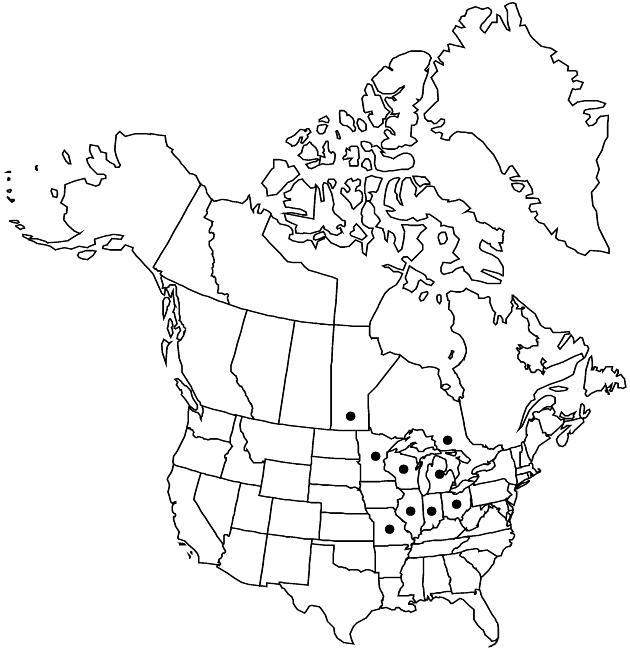Solidago riddellii
W. J. Med. Phys. Sci. 8: 499. 1835.
Plants 40–100 cm; caudices branching; vascular-bundles and petiole bases marcescent (attached to old stems for more than a season). Stems 1–10+, erect, glabrous. Leaves: basal and proximal cauline usually withering by flowering (other rosettes may present), tapering to long, winged petioles, blades often recurved, linear-lanceolate or oblanceolate, 100–240 × 8–16 mm, folded along midrib (V-shaped in cross-section), bases usually with (2–) 3–8 prominent lateral nerves, apices acute to obtuse, faces glabrous; mid to distal cauline sessile, blades recurved, linear-lanceolate, 50–70 × 8–11 mm, reduced distally, folded, bases with prominent lateral nerves. Heads 30–450 in corymbiform to somewhat paniculiform with rounded corymbiform branches (robust plants) arrays, branches and peduncles strigillose. Peduncles 2.8–4 mm, moderately short-hispido-strigose, lanceolate bracteoles 0–1. Involucres narrowly campanulate, 4.5–6 mm. Phyllaries (14–18) in 3–4 series, unequal, obtuse, broad, striations weak, obtuse to rounded, glabrous. Ray-florets 7–9; laminae 4.5–5.5 × 0.4–0.5 mm. Disc-florets 6–10; corollas 4.5–5.2 mm, lobes 0.7–1.8 mm. Cypselae 1.5–2.2 mm, glabrous; pappi 3.5–4 mm (apically clavate). 2n = 18.
Phenology: Flowering Sep–Oct.
Habitat: Wet prairielike sites and marshy ground
Elevation: 100–400 m
Distribution

Man., Ont., Ill., Ind., Mich., Minn., Mo., Ohio, Wis.
Discussion
Selected References
None.
Lower Taxa
"broad" is not a number.